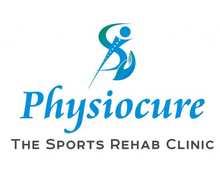Musculoskeletal or sports injuries are injuries that happen when playing sports or exercising.
There are two kinds of injuries:
- Acute injuries occur suddenly when playing or exercising. For example:
- Chronic injuries happen after you play a sport or exercise for a long time.
The first 24-48 hours after sustaining a soft tissue injury are crucial in ensuring the best outcome for healing. As a general rule, management for most injuries is as simple as remembering two simple acronyms – RICER and HARM.
The objective of RICE is to stop the injury-induced bleeding into the muscle tissue and thereby minimize the extent of the injury. Clinical examination should be carried out immediately after the injury and 5-7 days after the initial trauma, at which point the severity of the injury can be assessed more reliably.
Use RICER!
RICER stands for Rest, Ice, Compression, Elevation, and Refer. RICER highlights 5 simple methods to reduce pain and promote healing.
Rest – Initially, the objective for healing any soft tissue injury is to minimise swelling and bleeding. Reducing movement, and in some cases immobilising the injured area, is one of the simplest methods to reduce further injury and promote healing 6.
Ice – Cooling the injured area serves to slow down tissue metabolism 1,2,4. It may cause contraction of blood vessels which will slow down blood flow and assist with reducing swelling 1,2,4. Ice can also provide a temporary numbing effect to assist with short-term pain relief as well as 1,2,4. Ensure that intense cooling is not applied directly to the skin to minimize the potential for skin burns. Applying ice following common injuries such as Rotator cuff tear, Hamstring Strain or Ankle Sprains is usually a good start.
Compression – Compressing an injured area can have a direct effect on swelling. Applying a bandage to the area can help to limit the amount of bleeding that occurs in an isolated area 3. Caution needs to be taken to ensure that any compressive bandage is firm, however, does not reduce the normal circulation to the area.
Elevation – Elevating the injured area will also serve to reduce the collection of fluid to the area by limiting the effect of gravity 6. For foot or leg injuries, lying with the injured area elevated above the level of the pelvis with the use of pillows is an easy start.
Refer – While RICER helps promote healing in the early stages of injury to get the right diagnosis you need to see an appropriate health professional; say a physiotherapist! Here at Physiocure, we can give you an accurate diagnosis and also help plan a return to the sporting field.
Usually, the treatment of injured muscles should be carried out by immediate immobilization of the injured muscle (clinically, relative immobility/avoidance of muscle contractions). However, the duration of immobilization should be limited to a period sufficient to produce a scar of sufficient strength to bear the forces induced by remobilization without re-rupture and the return to activity (mobilization) should then be started gradually within the limits of pain.
At Physiocure we aim at, early return to activity, which is needed to optimize the regeneration of healing muscle and recovery of the flexibility and strength of the injured skeletal muscle to pre-injury levels. Our rehab programs are built around progressive agility and trunk stabilization exercises, as these exercises seem to yield a better outcome for injured skeletal muscle than programmes based exclusively on stretching and strengthening of the injured muscle.
Braces
- walking cast
- wrist splint
- ankle brace
- knee brace
- finger/toe splints
- casts (hard and removable)
An accurate diagnosis of the injury is important in determining whether a brace or splint is indicated. Generally, splints are for short-term use. Excessive, continuous use of a brace or splint can lead to chronic pain and stiffness of a joint or to muscle weakness. However, long-term use of some braces, such as a knee unloader brace, can help prevent the progression of pain attributable to osteoarthritis of the knee.
Avoid HARM!
HARM stands for Heat, Alcohol, Running/ exercise,and Massage. HARM represents 4 factors that you should avoid in the early stages of injury in order to maximise healing and recovery. While RICER focuses on minimising bleeding and swelling, HARM covers factors to avoid – all of which will increase circulation to the damaged area.
Heat – Heat will cause blood vessels to dilate which in turn will increase the flow of blood to the area. Avoid hot baths, showers, saunas, heat packs, and heat rubs.
Alcohol – Similar to heat, alcohol has an effect of dilating blood vessels, which in turn will increase the flow of blood to the area. Alcohol can also mask pain and the severity of the injury, which may put you at greater risk for re-injury 7.The alcohol effects on sports performance depend on the type and dosage of alcohol, acute vs chronic administration, the alcohol elimination rate as well as the type of exercise. Avoid drinking alcohol in the initial stages of healing any injury.
Running/exercise – An increase in heart rate increases the flow of blood around the body. This will cause blood to accumulate in the area faster. Take the opportunity to rest.
Massage – Massaging the area, once again, will stimulate the flow of blood to the area. Avoid massage in the initial stages of injury.
References:
- The use of ice in the treatment of acute soft-tissue injury.
- Cryotherapy for acute ankle sprains: a randomised controlled study of two different icing protocols.
- Brukner B, Khan K. Clinical Sports Medicine: Third Edition, McGraw Hill, Australia Pty, Ltd. 2007.
- Muscle injuries: optimising recovery.
- The effect of exercise, alcohol or both combined on health and physical performance.







